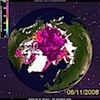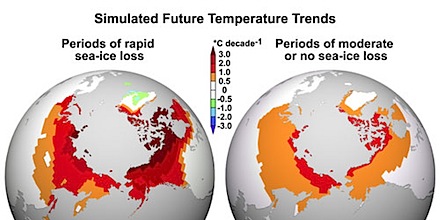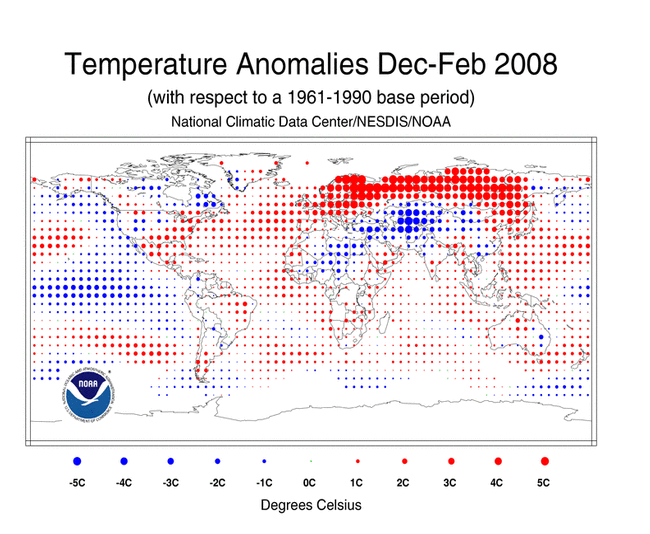William Calvin, emeritus professor in medicine of the University of Washington in Seattle, has written many books for the lay reader in the course of his career, most of them concerned with the human brain. But for a quarter of a century he has been following climate science literature closely, talking with its practitioners and writing articles for the public. Now he has produced a book on the subject: Global Fever: How to Treat Climate Change. He likens himself to a GP reporting on the results of the tests and analysis of the specialists and helping the patient understand the treatment options.
He is keen on analogy and quotes a memorable passage from poet Robert Frost on the metaphorical nature of thinking. Overheated frogs, things going pop, slippery slopes, creeps and leaps, domino effects, feedback loops, vicious cycles are some of the metaphors pressed into service in the major concern of the book – how one thing leads to another in climate change.
The book does not attempt a systematic account of modern climate science, the broad findings of which are taken as fully established. Rather it focuses on trying to explain what Calvin calls the principles of acceleration which are at work in climate change – the “how” of things, the underlying mechanisms. Feedback loops alter the normal cause and effect sequences, leading to reactions out of all proportion to the stimulus. Neurophysiologists (Calvin’s profession) study nerve and muscle cells with positive feedback mechanisms that help things to happpen very quickly. So climate change is often not, in the manner of a dimmer switch, proportional to the provocation. It is more like the ordinary switch where a little more pressure will bring sudden change. Gradual warming is an inadequate metaphor. Surprises are involved.
In a chapter on drought he shows how feedbacks are naturally a part of the process – for example over a tropical forest about half the rainfall comes from what recently evaporated from the leaves upwind. No evaporation means less rain. Things get worse. Drought is part of the normal instability of climate, but in the US most models agree in predicting that the dryness of the 1930s Dust Bowl will return to the American Southwest by midcentury – and for a very long time. He has some vivid pictures of the dust storms of the 1930s.
Another chapter discusses the climate creep whereby higher global temperatures lead to a widening of the tropic’s Hadley Cell movement of air which means dryer air for a further degree or two of latitude in the areas where deserts already exist. Major cities become vulnerable to spreading desertification — San Diego, Los Angeles, Cairo, Tel Aviv, Cape Town, Perth and Sydney. This isn’t just gradual warming for the places concerned, but a massive change.
In discussing ice he looks at the way it is not only melting but moving on Greenland, and points out that collapse, not melt, is the operative concept. We would have centuries up our sleeves if Greenland melted simply from surface run-off. It is one of the seriously incomplete aspects of the IPCC report that its estimate of sea-level rise depended mostly on melt run-off and thermal expansion of the ocean.
These are but a few of the matters Calvin discusses in his explanations of why and how we’re in trouble. Along the way he offers a very good short explanation of climate models and also of the comprehensive processes by which IPCC reports are prepared. His chapters are short and nuggety, not attempting to be comprehensive, not always strong on continuity, but packed with suggestions for better understanding the phenomena of climate change. His early pre-college experience in journalism and photography is reflected in the many pictures, diagrams and maps which accompany his discussions. Quotations from a wide variety of scientists and writers stud the text and give a good sense of the large community of people working in the climate science field.
When he’s finished with explaining how things are going wrong he turns his attention to what we need to do to turn things around by no later than 2020, his latest date for stopping the growth in emissions. In spite of his awareness of how rapidly things can worsen in climate terms he is an optimist. He considers that, once we understand what’s what, progress in addressing it can be rapid. When tempted by pessimism he recalls the progress he’s seen in medical science in his lifetime. He also pins hope on religious leaders coming to see that climate change is a serious failure of stewardship and our present use of fossil fuel as a deeply immoral imposition on other people and unborn generations. Their arguments will trump the objections of the vested interests, just as they did when slavery was ended in the 19th century. And the developed nations already have the technology to achieve within ten years a substantial reduction in their fossil fuel uses. He allows for a wide range of possibilities here, but selects three as the most likely to produce rapid turnaround – energy efficiency, hot rock energy and nuclear generation. Hot rock energy, for those who haven’t encountered it, takes advantage of hot and dry granite below the sedimentary rocks. It can be drilled, and the further down the hotter it gets. Water is injected, returns as steam for a turbine, and is subsequently recirculated. In recommending nuclear power generation he refers to improvements in safety and efficiency since the industry first started, and also looks ahead to the fourth generation reactors which will increase efficiency enormously. Finally, along with carbon-free generation we also need continent-wide low-loss DC transmission lines.
Different writers have different proposals for the best technologies, and the array can appear bewildering. But it also means that there are plenty of options and most of them can at least contribute towards the solution. Calvin is mainly concerned that we act quickly, and he turns to analogy again, the same one that we now hear from many quarters – arming as for a great war, doing what must be done regardless of cost and convenience.
Appendix: The passage Calvin quotes from Robert Frost is very striking. Worth pondering:
[All] thinking is metaphorical, except mathematical thinking. What I am pointing out is that unless you are at home in the metaphor, unless you have had your proper poetical education in the metaphor, you are not safe anywhere. Because you are not at ease with figurative values: you don’t know the metaphor in its strength and its weaknesses. You don’t know how far you may expect to ride it and when it may break down with you. You are not safe in science; you are not safe in history.






